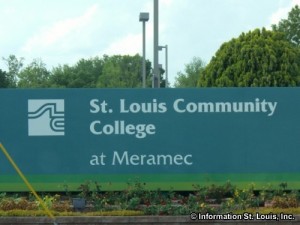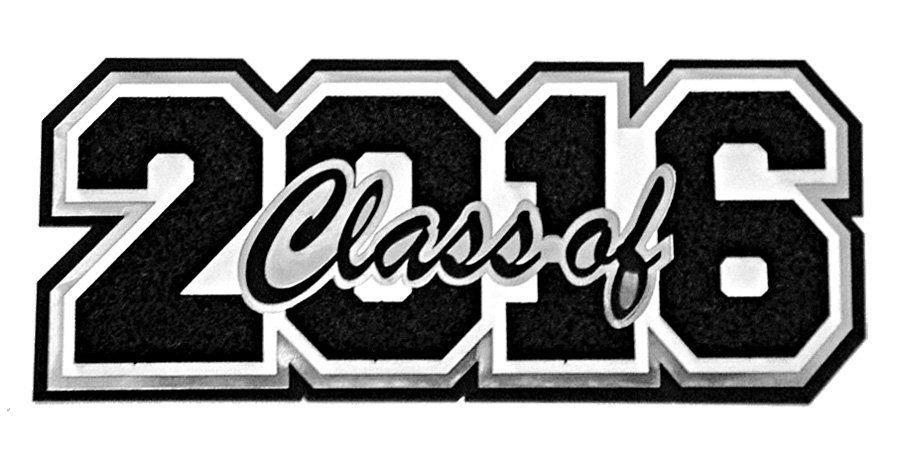by Nathan Quinn, Opinions Editor
This article was temporarily removed at the discretion of Mehlville’s journalism adviser. This decision was not related to content, but to issues with the editorial process. Mehlville Media wants to thank all of its readers for contributing to the conversation. If anyone has any further comments/concerns, please feel free to continue the discussion in an appropriate manner via comments or a letter to the editor. The following article is a blog and states the opinions of a single individual. It does not represent the views of the Student Prints staff, its adviser or the Mehlville School District. This story was first published in an earlier form on April 16, 2012.
– Thanks, the Student Prints Editorial Staff
“I’m going to Meramec.”
“I’m trying to decide between Meramec and ______.”
Such proclamations are common throughout south county’s high schools: Meramec Community College draws 40 percent of the students in the Mehlville and Bayless School districts with its promises of low credit costs and easy admission.
Indeed, Meramec credits cost half of what they would at a four year college like Missouri State or UMSL…and admission is certainly easy.
However, there are a great many disadvantages to a community college that simple credit hour costs do not take into account, and a great number of opportunities in the world that the Meramec PR team might not wish to become common knowledge in south county.
For starters, the disadvantages of community college:
There is a reason that Meramec costs less than other schools that is totally separate from credit hour costs: it is not a residential college. No one lives on campus, though they do offer help in getting off-campus apartments.
One therefore has to factor in the costs of supporting himself at home along with the fees of the college itself, plus all of the gasoline expenses for getting there every morning—not an insignificant expense! While this still does not make going to a four year school cheaper, it does make a difference, especially when combined with the facts of earning potential.
Census data clearly shows that future earnings are directly proportional to years spent in college, with students who spent four years in school averaging $15-20 thousand more a year than those with only one to three years of school.
While some students plan to transfer after two years—this is, indeed, the most sensible use of a community college—they may run into some problems there, as well.
Apart from the fact that many scholarships are only available to students fresh out of high school, community college students may find it difficult to get their credits to transfer to a four year school if they did not plan their pathway carefully in advance. While Missouri community colleges like Meramec have worked out programs for credit transfer with many Missouri colleges, it is unlikely to be as easy to transfer those credits out of state.
While it is true that community college is better than no college at all–no one is arguing that–it is clearly not the best option if a student has a chance of going elsewhere, even if that chance seems expensive on the surface. After all, if students who earn bachelor’s degrees make $15,000 more than those with associate degrees, the loans will eventually be worth it.
Just note these statistics, pulled directly from iseek.org, a career and education website sponsored by the state of Minnesota:
“Regardless of the highest degree, people who started their post-secondary education with an associate degree earn less on average than those who started at a four-year college. The difference is particularly large for those who have a doctorate or a professional degree.”
“A study by the U.S. Department of Education found that about 90 percent of students entering community colleges intended to obtain a formal credential or to transfer to a four-year college. The report estimated that between 51 and 63 percent (depending on data used) of these students had fulfilled their expectations within six to eight years after initial enrollment. Overall, about 29 percent of community college students had transferred to four-year colleges.”
When students eventually do transfer, if they overcome the statistical likelihood that they will not, they will realize that they have missed out on a lot of experiences that their four-year peers have shared. The fact is, a community college does not have the atmosphere that another college would. Many current Meremac students agree that it is essentially a high school atmosphere, and that is hopefully not what a college bound student would prefer to look forward to after graduation.
Also, community colleges do not offer the depth of course opportunities that four year colleges do, nor do they have the resources to do nearly what a four year school can in terms of research. This limits the fields that community college graduates can enter even if they go to a four year college, because they might not be able to meet the requirements of a particular degree program.
Meramec lessens this chance by working closely with area colleges, but not everything will always work perfectly.
Finally, since Meramec is a school available to anyone–that is its mission, after all–not everyone there is going to be a good influence. While this could be true at any college, it is especially so at a school that does not establish minimum qualifications for attendance. This may indeed prove a boon in select cases, but it provides the opportunity for a lot of the same problems that beset the average public high school. For instance, see the infamous Meramec fight viral video.
That, unfortunately, is the rub: Meramec will admit just about anyone, while four year schools try to select the best students that they can. One would expect, with this knowledge, that high schools would push all of their students to attend four year schools, if possible. After all, there are certainly a number of perfectly capable students that go to Meramec for various reasons. There is a good likelihood that a number of those students could have gone elsewhere had they been directed to the right places by a parent, teacher, guidance counselor, or interested friend.
In fact, Mehlville has a history of trying very hard to feed its students into Meramec—even when some of those students have absolutely no business going there. The A+ Program has historically been the best example of this—aggressively marketed to all MHS students and parents alike, A+ promises free community college to everyone who meets a certain set of requirements by the time they graduate high school.
To interested freshmen, A+ sounds like a great deal, especially when TAP teachers are pressuring them to invest their time in it and their parents are being simultaneously bombarded with how wonderful a program it is at every parent teacher conference. A+ is not a bad program–it is essentially a guaranteed institutional scholarship.
What many students and parents fail to recognize is that Meramec is not the only place that will offer them an institutional scholarship. Many private colleges are more than willing to help potential students defray their college costs, and the federal government offers Pell Grants of up to $5,500 to qualifying students.
Nor are community colleges alone in being affordable. In fact, Ivy League colleges have led the charge toward affordable college for everyone, opening up their coffers and offering huge need-based grants to all students accepted. There are only seven colleges in the United States that are need-blind and full-need for all applicants, including international students, and those schools are Amherst, Dartmouth, Harvard, MIT, Princeton, and Yale. If one looks at full-need need-blind admission for U.S. students only, there are a total of 46 schools nationwide that will meet all need for their matriculated students. This list includes such diverse names as UVA, Wesleyan, and the University of Rochester. In many cases, if a student can gain acceptance to one of these schools he will find it cheaper than the local community college!
Meramec should be a last resort school. It should be a hard decision, arrived at when a student and his family have been unlucky with scholarships and absolutely cannot afford a four year school; or when a student is unable to gain acceptance elsewhere, but still has the drive to continue his education. Both of these scenarios are very real, and represent a good use of the community college system. The second is even admirable.
The problems start when a student with a 28 ACT and a decent GPA goes to Meramec just because it is free. Will the difference of a few thousand dollars really be worth it down the road?
After speaking with a both a Mehlville guidance counselor and the district’s Marketing coordinator, I have great hope for Mehlville going forward into the 20-teens. The leadership seems to be aware of Mehlville’s trend toward Meramec and away from out of state schools, and they are, of course, working to make sure that their offerings are as balanced as possible. I have great faith in their ability to do their jobs much better than I could. None of my points should be taken as a direct criticism of any individual or institution at Mehlville–that is not my goal. Instead, I simply want to raise awareness of this issue so that future students can become informed of all of their options. If even one Mehlville student goes to UVA on a full need scholarship because of this article, I will count it a success.
Image courtesy of 63122.com






Nquinn • Apr 20, 2012 at 9:33 pm
As an editor, rather than in my capacity as a blogger, I wish to reiterate that comments which are overwhelmingly personal attacks will not be approved. Thank you for commenting–I welcome all viewpoints. That is why I write…but please join me in keeping things civil.
Ernad Suljic • Apr 19, 2012 at 10:24 am
Filled with accurate facts, and well written!
Anonymous • Apr 18, 2012 at 8:16 pm
Thank you for taking out the phrase “undesirables,” which I personally found very offensive. This edit definitely makes the article more readable, even if I don’t personally agree with all of the points.
Kayla • Apr 18, 2012 at 1:00 pm
I understand how you feel. And I get what your saying about people use meramec as a last resort, however there is absolutly nothing wrong with community college. Not all of us are super intelligent and talented like you are. In fact, I haven’t been blessed with the ability to have amazing grades or something that has been pushing my fullest potential. However I feel like you totally bashed this idea of community college. I can’t afford a private college or a college university of any sort. I had been accepted into only 1 college because of my grades and ACt and the fact of the matter is, the colleges care about your grades!! So I’m using community college as a stepping stone to further my experience as a college kid when I’m able to tranfer with better grades. However you should see many kids aren’t like you, so I don’t think this was the wisest decision to bash meramac’s program.
Ryan Miriani • Apr 18, 2012 at 12:58 pm
I want to be an Armadillo hunter when I grow up; does Meramec have any courses for that?